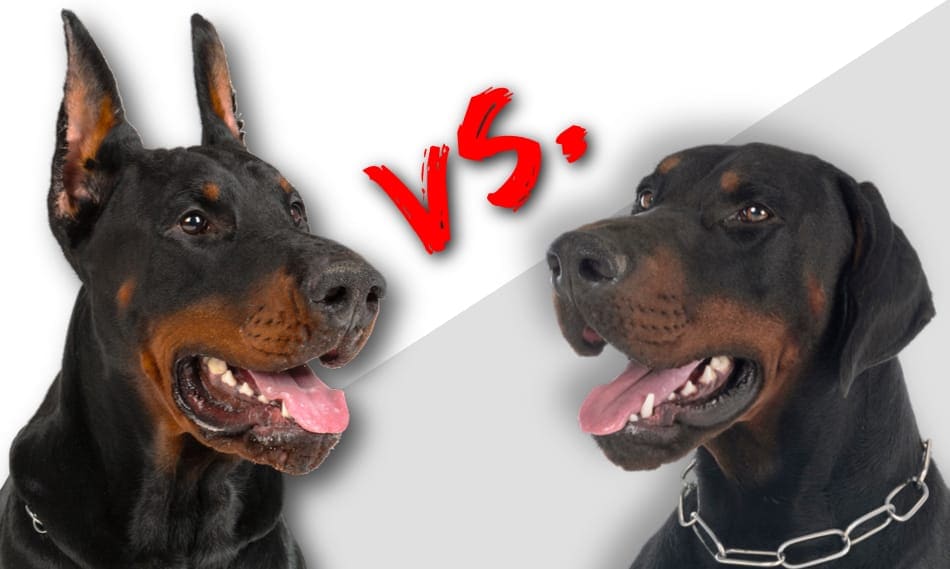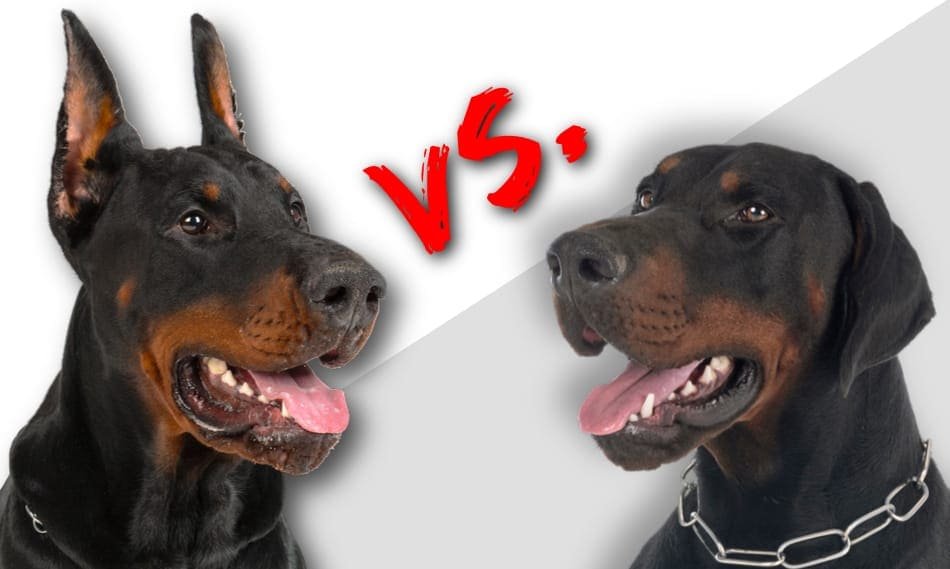Ear cropping in Dobermans is a controversial practice that has sparked intense debates among dog lovers and animal welfare advocates. While some argue that it is a necessary procedure to maintain breed standards, others believe that it is a form of unnecessary mutilation. But behind the controversy lies the question: does it hurt a Doberman ear cropping?
Historically, ear cropping was performed on Dobermans to enhance their appearance and give them a more alert and intimidating look. However, the procedure involves the removal of a significant portion of the dog’s ears, which can be painful and stressful. According to the American Veterinary Medical Association (AVMA), ear cropping is considered an elective surgery and should only be performed by qualified veterinarians using proper anesthesia and post-operative care. While some owners claim that their Dobermans display no signs of pain or distress after the procedure, it is essential to prioritize the well-being and comfort of our furry companions and consider alternative methods to achieve the desired aesthetic.
Ear cropping is a surgical procedure performed on Dobermans to achieve a specific appearance. While there can be some discomfort during the recovery period, pain medication is typically provided to manage any discomfort. It’s important to choose a skilled and experienced veterinarian for the procedure, as improper technique can lead to complications. With proper care and follow-up, the pain is minimized, and the Doberman can go on to live a normal, happy life.

Does It Hurt a Doberman Ear Cropping?
Ear cropping is a controversial topic when it comes to Doberman Pinschers. Many people wonder if the procedure is painful for the dog and if it is necessary for the breed. In this article, we will explore the topic of ear cropping and discuss whether or not it hurts a Doberman.
The Ear Cropping Procedure
Ear cropping is a surgical procedure in which a portion of a dog’s ear is removed to create a specific shape or appearance. In the case of Doberman Pinschers, the procedure is often done to give them the characteristic alert and erect ears that are desired for the breed standard.
The procedure is typically performed on puppies when they are around 7 to 12 weeks old. Anesthesia is used to ensure the dog is comfortable and doesn’t experience any pain during the surgery. The ears are then trimmed and stitched to create the desired shape and position.
After the surgery, the dog will need to wear a protective bandage or cone to prevent them from scratching or biting at their ears. The stitches will be removed after about 10 to 14 days, and the ears will continue to heal and take on the desired shape over the following weeks and months.
Does It Hurt?
While the ear cropping procedure itself is done under anesthesia, it is important to remember that it is still a surgical procedure. Like any surgery, there is the potential for some pain or discomfort during the recovery period. However, veterinarians take steps to minimize pain and ensure the dog’s well-being.
Pain medication is often prescribed to help manage any discomfort the dog may experience after the procedure. Additionally, proper aftercare is crucial to prevent infection and promote healing. Following the veterinarian’s instructions for cleaning and caring for the ears can help minimize pain and complications.
Considerations and Alternatives
It is important to consider the potential risks and benefits of ear cropping before making a decision. While ear cropping is a personal choice and often done for cosmetic reasons, it is not without controversy. Many countries have banned the practice, considering it unnecessary and potentially harmful.
For those who prefer not to have their Doberman’s ears cropped, there are alternatives. Some owners choose to leave their dog’s ears in their natural state, which requires regular cleaning and maintenance to prevent issues such as infections or ear hematomas. Others opt for “show cropping,” where a shorter and less invasive crop is done.
Advantages of Ear Cropping
Proponents of ear cropping argue that there are advantages to the procedure. One of the main reasons is that it helps the dog achieve the breed’s distinct and desirable appearance. Cropped ears can also reduce the risk of certain ear infections and other ear-related health issues.
Disadvantages of Ear Cropping
On the other hand, opponents of ear cropping believe that the procedure is unnecessary and can cause unnecessary pain and stress to the dog. Some argue that ear cropping is purely cosmetic and does not provide any significant health benefits. Furthermore, complications can arise from the surgery, such as infections or improper healing.
- Ear cropping is a surgical procedure that involves removing a portion of a dog’s ear.
- The procedure is typically performed on Doberman Pinschers when they are puppies.
- While the procedure is done under anesthesia, there is potential for some pain or discomfort during the recovery period.
- Pain medication and proper aftercare can help minimize pain and complications.
- There are alternatives to ear cropping, such as leaving the ears natural or opting for a shorter and less invasive crop.
- Advantages of ear cropping include achieving the desired breed appearance and reducing the risk of certain ear-related health issues.
- Disadvantages of ear cropping include the potential for unnecessary pain and complications.
| Advantages | Disadvantages |
|---|---|
| Breed appearance | Unnecessary pain |
| Reduced risk of ear infections | Potential complications |
Is Ear Cropping Right for Your Doberman?
Ultimately, the decision to have your Doberman’s ears cropped is a personal one. It is important to weigh the potential benefits against the risks and consider your own preferences and beliefs. Consulting with a veterinarian who has experience with ear cropping can also provide valuable insights and guidance.
Key Takeaways: Does it Hurt a Doberman Ear Cropping?
- Ear cropping is a surgical procedure performed on Doberman Pinschers to reshape their ears.
- The procedure can cause pain and discomfort for the dog during and after the surgery.
- Proper pain management and post-operative care are essential to minimize the dog’s discomfort.
- There are potential risks and complications associated with ear cropping, including infection and improper healing.
- It is important to consult with a professional veterinarian who is experienced in ear cropping to ensure the procedure is done safely and responsibly.
Frequently Asked Questions
Here are some common questions about Doberman ear cropping:
1. What is ear cropping and does it hurt a Doberman?
Ear cropping is a cosmetic surgical procedure performed on some dog breeds, including the Doberman, to alter the shape and appearance of the ears. The procedure involves removing a portion of the outer ear and then taping the remaining ear to encourage it to stand upright.
While ear cropping is a surgical procedure that can cause some discomfort, it is typically done under general anesthesia, ensuring the dog feels no pain during the surgery itself. After the procedure, there may be some post-operative pain that can be managed with pain medication prescribed by a veterinarian.
2. Are there any benefits to ear cropping for a Doberman?
The primary reason for ear cropping in Dobermans is aesthetic. It is believed to enhance the breed’s alert and confident appearance. Some breeders and owners also claim that cropped ears help prevent ear infections and improve the dog’s hearing, but there is limited scientific evidence to support these claims.
It’s important to note that ear cropping is a personal choice and not essential for the well-being of the dog. Ultimately, the decision to crop a Doberman’s ears should be made in consultation with a veterinarian and based on individual preferences and local regulations.
3. How long does it take for a Doberman’s ears to heal after cropping?
The healing process after ear cropping can vary, but it typically takes several weeks for the surgical incisions to fully heal. During this time, the dog’s ears may be bandaged and require careful cleaning and monitoring for signs of infection. It’s crucial to follow the veterinarian’s instructions for post-operative care to ensure proper healing.
After the initial healing period, it may take several months for the ears to stand upright fully. The ears may need to be taped or supported during this time to encourage the desired upright position. Regular check-ups with a veterinarian are essential to monitor the healing progress and provide any necessary adjustments or interventions.
4. Are there any risks or complications associated with ear cropping?
Like any surgery, there are potential risks and complications associated with ear cropping. These can include infection, excessive bleeding, poor wound healing, anesthesia-related complications, and adverse reactions to medications.
It’s crucial to choose a skilled and experienced veterinarian who follows proper surgical protocols and provides thorough post-operative care. This helps minimize the risks and ensures the best possible outcome for the dog.
5. What are the alternatives to ear cropping for achieving the desired look?
If you prefer not to pursue ear cropping for your Doberman, there are alternative methods to achieve the desired appearance. One option is using natural ear stands, which involve taping and training the ears to stand upright without surgical intervention.
Additionally, there are breeders who specialize in breeding Dobermans with naturally upright ears. By selecting a puppy from such a breeder, you can avoid the need for ear cropping while still having a Doberman with the desired appearance.

To address the question of whether ear cropping hurts a Doberman, it is important to note that this procedure involves the surgical removal of a portion of the dog’s ear. It is carried out under anesthesia by a veterinarian with the intention of altering the appearance of the dog’s ears. While the procedure is generally considered painful, proper pain management is provided to minimize discomfort and promote a smooth recovery.
However, it is widely debated whether ear cropping is necessary or ethical, as it is primarily done for cosmetic purposes rather than medical reasons. Many countries, including several states in the United States, have banned or restricted this procedure. Ultimately, the decision to crop a Doberman’s ears should be thoroughly considered, taking into account the potential pain and long-term effects on the dog’s well-being.
